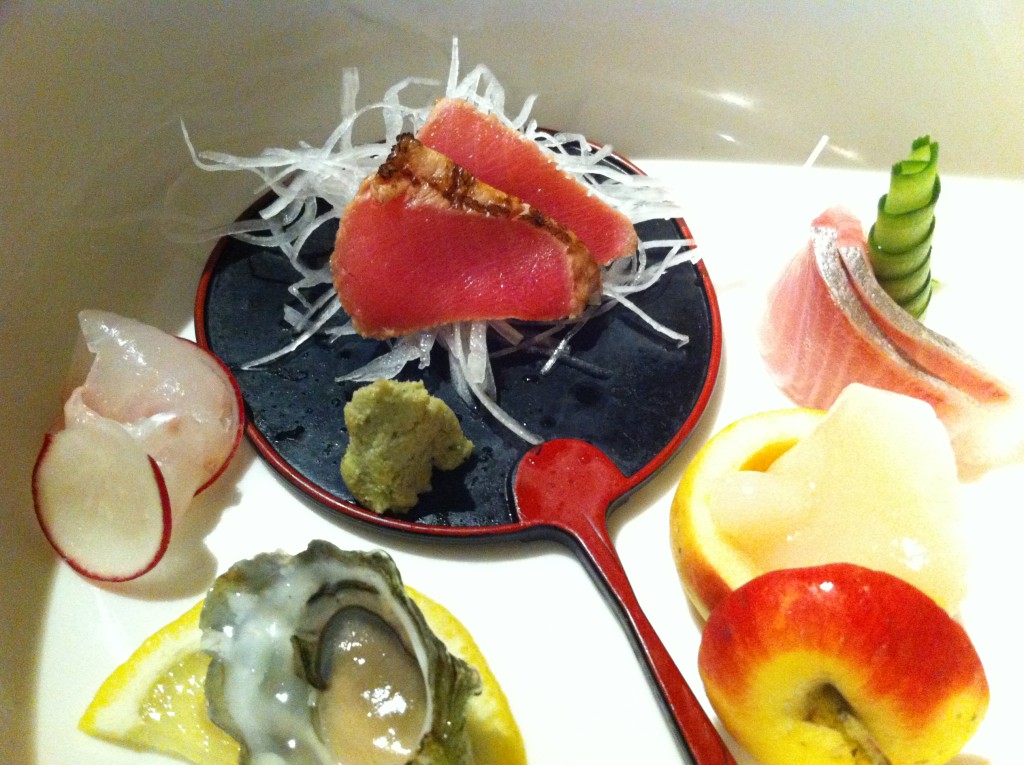The relationship between a sushi chef and a diner is based on respect. When you go out for sushi, there are rules in place to make sure that you’re honoring that respect. Unfortunately, those rules are mostly unspoken, so there’s a good chance you could be offending the chef without knowing it. Luckily, David Gelb knows how to deal with sushi chefs. He made his first trip to Japan when he was two years old and he’s been obsessed with the culture ever since. Many more trips followed and now he’s put his Japanophilia to work as director of one of the best sushi documentaries you’ll ever see: Jiro Dreams of Sushi.
The documentary follows Jiro Ono, the 85-year-old master who owns Michelin three-star sushi palace Sukiyabashi Jiro in Ginza, as he perpetually works towards achieving perfection in his craft. After eating at some of the best sushi bars all over the world and spending two months following Jiro’s every move, it’s safe to say that Gelb is an expert in sushi culture. As an intrepid explorer of the raw fish arts, he’s the perfect person to lay out some very wise guidelines on how to make it through a meal without angering the sushi chef.
On chopsticks…
Gelb says “You’re supposed to show a certain kind of order and respect for the aesthetic of the bar.” To achieve this, fold your chopstick sleeve into a triangle as a rest for your chopsticks. Don’t leave your chopsticks on the plate after each course because that’s an extra action for your server to have to perform when they take the plate away and it makes their movements less efficient. Also, don’t rub your chopsticks together to get rid of the splinters. That’s an insult to the chef because it means you don’t trust that he’s providing quality chopsticks.
On wasabi…
Don’t ever mix your wasabi into your soy sauce. If the chef has really good, fresh wasabi that he’s grinding, then you’re just diluting the flavor and wasting his carefully-sourced product. It may not necessarily get you kicked out, but the chef is always watching to see if you know how to behave and will adjust your meal accordingly.
On soy sauce…
If the sushi comes already dressed (with soy or ponzu), don’t add more soy sauce to it. The chef takes a lot of time to create the perfect balance of flavors. When you add more soy to your fish, that’s the equivalent of telling the chef that you think you know sushi better than he does.
On ginger…
“One thing to never do: don’t put ginger on top of your sushi and don’t put ginger in your soy sauce either.” Gelb explains that the ginger provided is meant purely as a palate-cleanser, not a flavor enhancer. “If the sushi chef wants some ginger on the piece of sushi for balance, he will have put it on there himself.”
On rice…
Don’t mess with the rice. Even though a piece of sushi may seem small, it’s very carefully constructed. If you take the fish off the rice and eat it as sashimi, you’re ignoring half of the components of the dish. According to Gelb, “the rice is just as important as the fish.”
On drinking…
A good sushi restaurant is not like a saloon. You can drink, but don’t do it to excess. “They don’t like it when customers are getting drunk or rowdy or taking too long,” Gelb says, “because there are other customers waiting on line to get in.” If you treat a sushi bar like a Japanese pub (an izakaya), you’re messing up the flow of the place and you’re ruining your own palate to the point where you won’t be able to taste the subtleties of the fish.
On pacing…
Don’t get up from the table for frivolous reasons. Bathroom breaks are okay, but if a sushi chef knows you’re going out for a smoke break or to take a phone call, they could end your meal right then and there. You’re in their domain. Respect their timing. A good omakase (sushi tasting menu) is like a symphony; if you walk out in the middle, you won’t be able to appreciate the whole piece.
To get in good with the sushi chef…
Gelb says that you can usually suss out a chef’s personality by making sushi-related small talk at the beginning of your meal. Ask where he gets his fish from or what his favorite fish is today. Once the nigiri starts coming, compliment the sushi. If you’re really looking to score points, offer to buy the chef a beer. If he accepts, you’re doing pretty well. At the end of your meal, you can say “Gochi so sa ma” (“Thank you for the meal!”) and you might be surprised to find out that you’re treated like royalty the next time you come in. Sushi chefs may be prickly, but they like being complimented just as much as everyone else.
A version of this post originally appeared on BonAppetit.com.
Main photo:![]() Some rights reserved by photoskate
Some rights reserved by photoskate



Having japanese grandparents, I’ve always done these things whenever I had a japanese meal, lol
We’re not all lucky enough to have Japanese grandparents, George!